Solar Sharing as a solution to Japan’s energy crisis
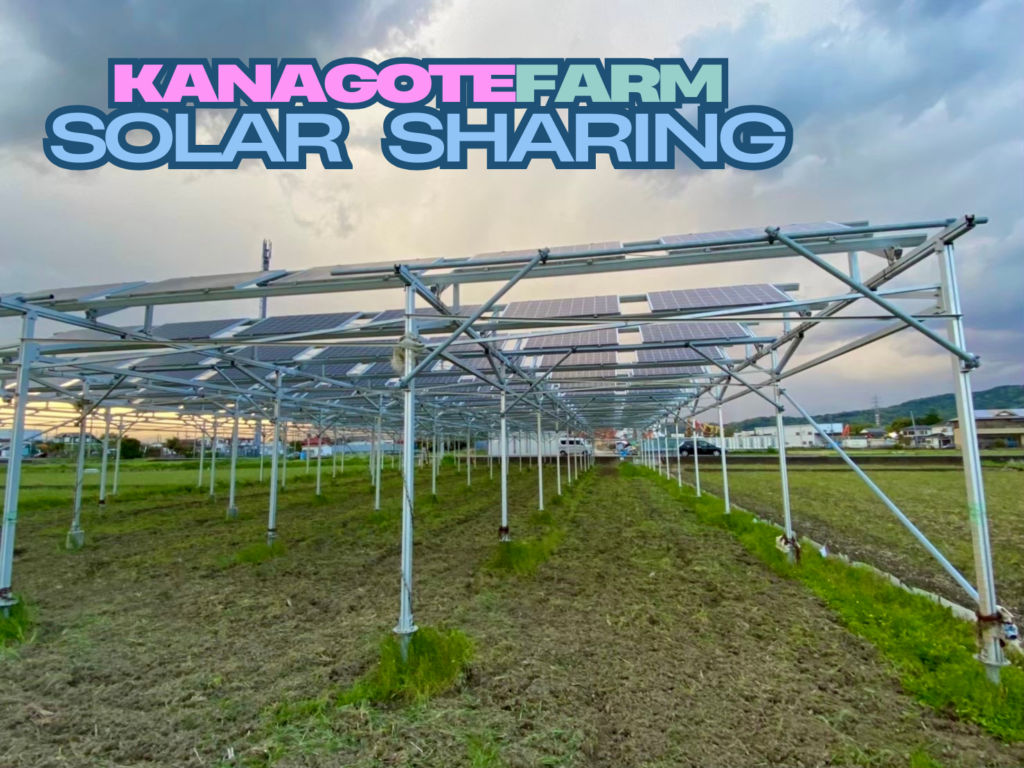
The need to shift to clean energy sources is becoming more and more urgent. Whilst there are several different renewable energies out there, we have taken a closer look at one promising approach called “Solar Sharing”. In Solar Sharing we place solar panels above agricultural lands and grow crops underneath it, like the picture above. Many of you may think that the panels blocking the sunlight would have negative effects on the crops but science has shown otherwise. Solar Sharing has the potential to solve both energy and agricultural issues in Japan, and this approach could be applied around the world. Here, we have interviewed Mr. Oyamada and his team who are some of the leading figures spreading solar sharing in Japan and run Kanagote farm where they currently have 5 solar sharing sites and run 100% CO2 free cafe.
What is Solar Sharing?
Solar Sharing is NOT about sharing solar energy with your neighbor or your friend, but it is about sharing the sunlight with agriculture and solar power generation. One key idea here is “light saturation point”. Generally speaking, the more light creates more photosynthesis but whether it’s rice, vegetable, fruits or flower, plants have a point where more sunlight will not affect the amount of photosynthesis it can create. This means that it won’t affect the plants’ growth to decrease a certain amount of sunlight. For some plants, they even grow better with decreased sunlight. In solar sharing solar panels are placed above the plants, so about 30-40% of sunlight is blocked depending on the way the panels are placed.
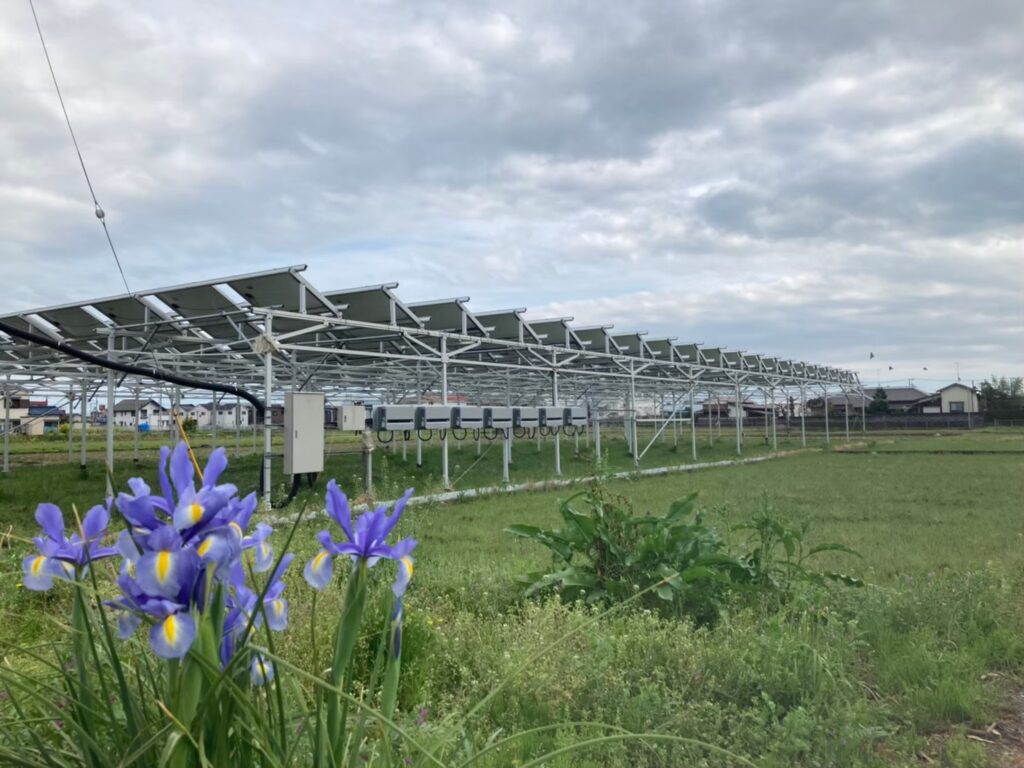
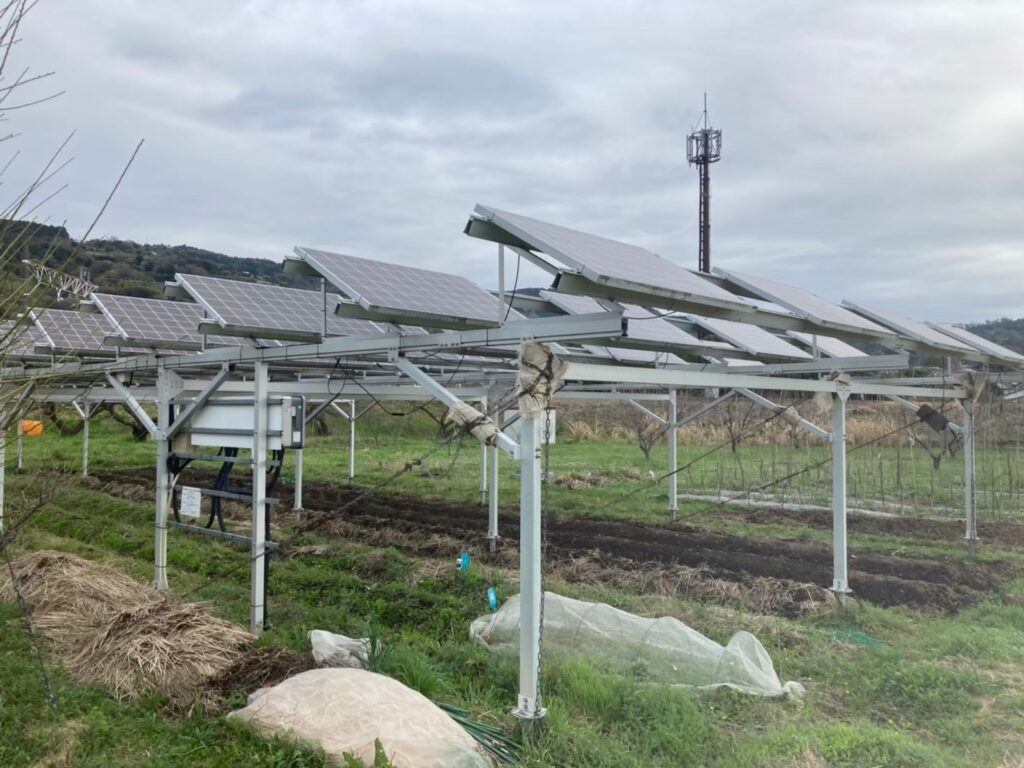
Kanagote Farm
We have interviewed Mr. Oyamada and his team, who are running a solar sharing farm called Kanagote Farm. Kanagote Farm is located in Odawara, Japan. They already have 5 farms (as of 2023) growing all kinds of plants like rice, sweet potatoes, mandarins and onions under the panels. Mr.Oyamada aims to build a new solar sharing farm every year. They are unique in that they run a ‘Farmer’s Cafe SIESTA. They serve vegetables grown on their farms, the energy used in the cafe is 100% covered by the solar energy they produce, and the Sake they serve is also produced using their solar power. This cafe and the farm naturally create a new community where people gather to create a better society.
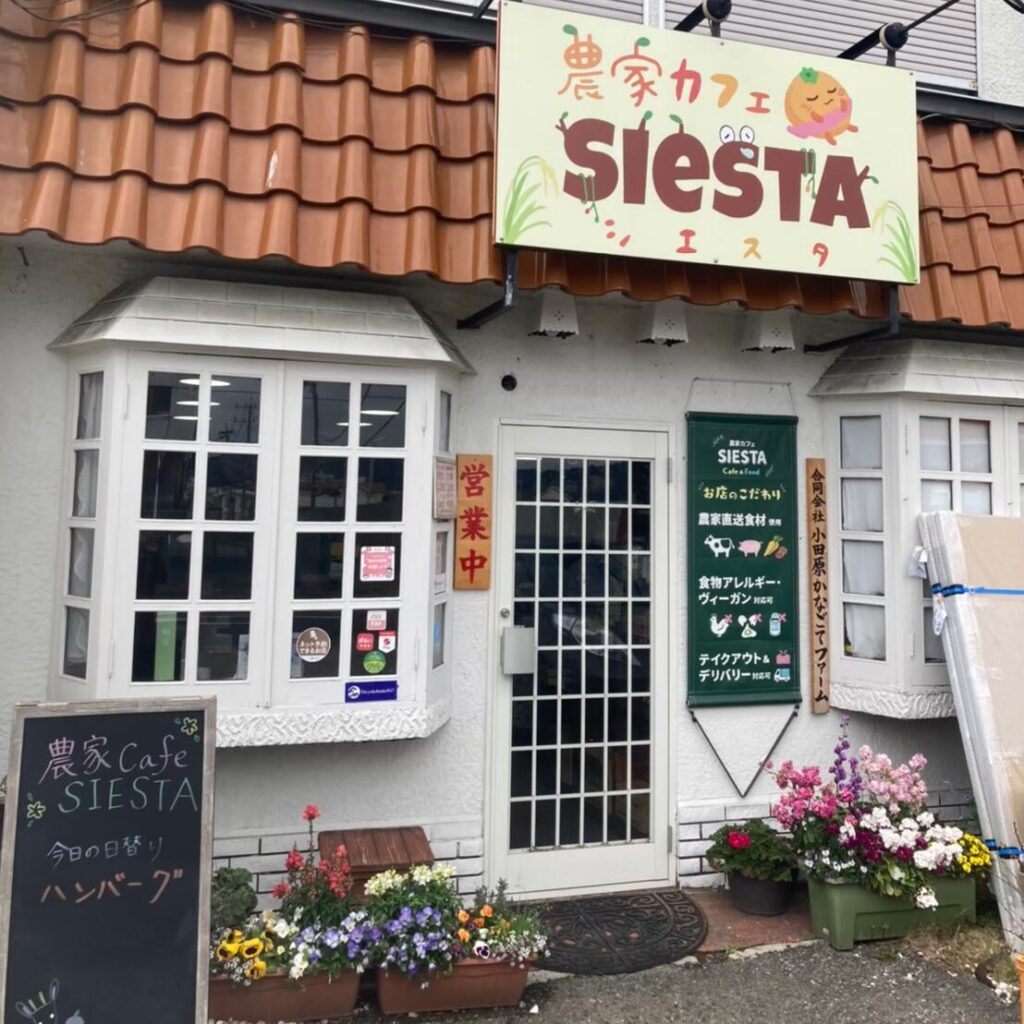
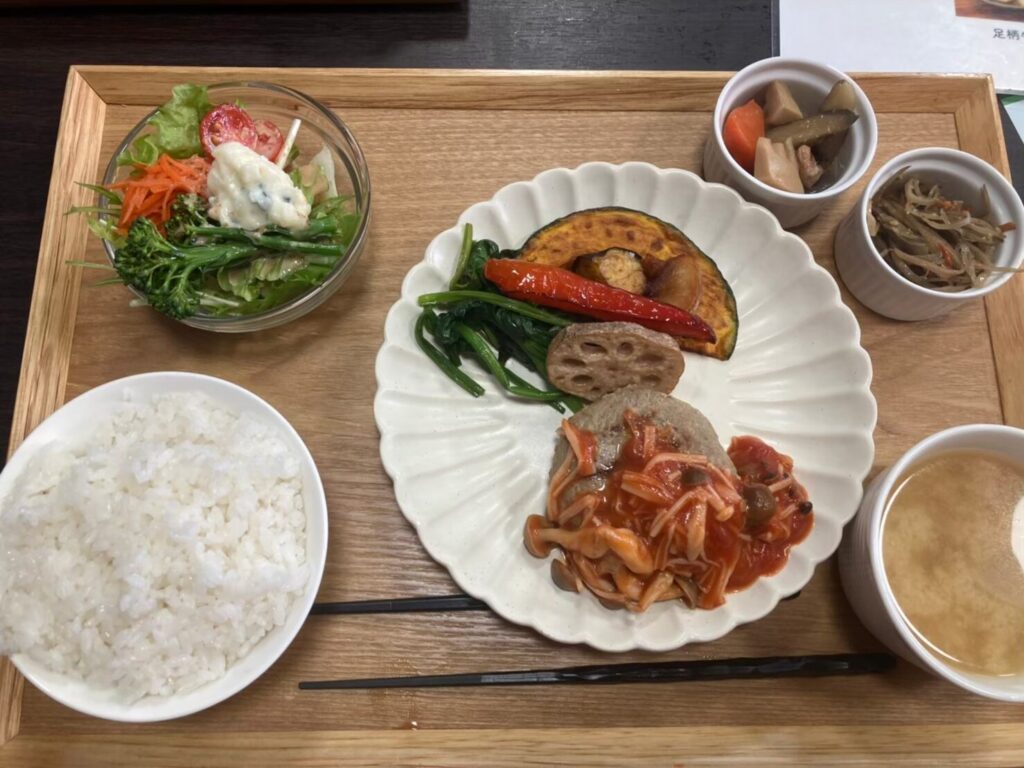
Off-site PPA
Kanagote farm has adopted the “off-site Power Purchase Agreement (off-site PPA)” model. The energy used in the Farmer’s Cafe is generated on their farms (=off-site) and is then sold to the energy retailers. Then they buy the necessary energy from the retailers. This way, they can use the existing power line to supply electricity while making sure to use not more than what they have generated. Mr. Oyamada emphasizes the importance of off-site PPA in terms of energy price stability. Japan is currently facing an electricity price increase due to the Russian invasion of Ukraine. He says that because the energy they use is generated on their farms, they are very little affected by this price increase. Some of you may think that the price of solar power won’t be affected by the electricity price increase, but it would be if the energy is just bought from a retailer.
Solar Sharing as a solution to Japan’s energy crisis
Japan aims to reduce greenhouse gasses by 46% by 2030, and realize carbon-neutrality by 2050. Japan still has great dependency on fossil fuels. In 2021, Japan’s dependency on fossil fuel was 83.2%. Japan also has a low self-sufficiency ratio of 11.3%. In addition, electricity rates in Japan for homes and industrial use have increased by over 30% since 2010, and have faced temporary power shortages. To solve these problems, some of the nuclear power plants that have been suspended since the Fukushima nuclear power accidents have been restarted and more to follow. However, many oppose the restarting of the nuclear plants as nuclear plants hold many issues and could lead to a huge nuclear disaster. So, can Solar Sharing be the solution to energy issues Japan holds?
Let’s start with estimating how much energy could be made from solar sharing. From the solar panel capacity of the Kanagote farm, it could be calculated that they generate about 45.4 kWh per square meters a year. Japan has about 4,325,000 ha of cultivated land, so if all of this were to start solar sharing, about 1,963,550GWh of energy could be generated per year.
Of course this estimation is not accurate at all, the weather and the temperature has to be taken into account, and not all agricultural lands can start Solar Sharing (but many of the agricultural fields are well exposed to the sun so they have good conditioning for solar energy), but considering that Japan’s total power generation was 1,327,000 GWh, Solar Sharing has a huge potential to be the solution. With the existing renewable energy and the increase of solar panels on buildings, Solar Sharing could allow Japan to realize carbon neutrality. In terms of energy self-sufficiency ratio, Solar Sharing is much safer than relying on fossil fuels but many of the solar panels are made overseas and the rare metals used are also imported from overseas. Although Solar Sharing would definitely improve the power shortage, weather could affect the amount of energy generated and solar panels are vulnerable to strong wind like typhoons, so the stability of energy supply needs to be worked on.
Solar Sharing as a solution to Japan’s agriculture issues
Japan is also facing agricultural issues. Japan’s food self-sufficiency ratio is 38% on a calorie basis which is very low compared to other economically developed countries. Another issue is that 70% of the farmers in Japan are over the age of 65. There are large areas of land where cultivation has been abandoned. Mr.Oyamada believes Solar Sharing can also address these issues. Solar Sharing has the potential to multiply farmer’s income, and could stabilize their income as the annual earnings from the solar energy generation is quite consistent. This could earn farming popularity amongst the young, and increase both the food self-sufficiency ratio and the young population in farming. The government however has to make sure that farming is continued even if the income from solar energy generation is greater.
Spread the idea of Solar Sharing!
Mr. Oyamada does not just call for clean energy. Through starting Kanagote farm and his cafe, he has shown the world the possibility to run a society 100% free of CO2 and nuclear energy. Japan faces a critical issue on both energy and agriculture. These are two very important issues that relate to Japan’s security. As we have shown, Solar Sharing has the potential to solve both of these problems. The government’s commitment on these topics are necessary but it is also very important that more people know about the issues and the possible solutions like solar sharing. So please share our article to spread the idea of Solar Sharing!
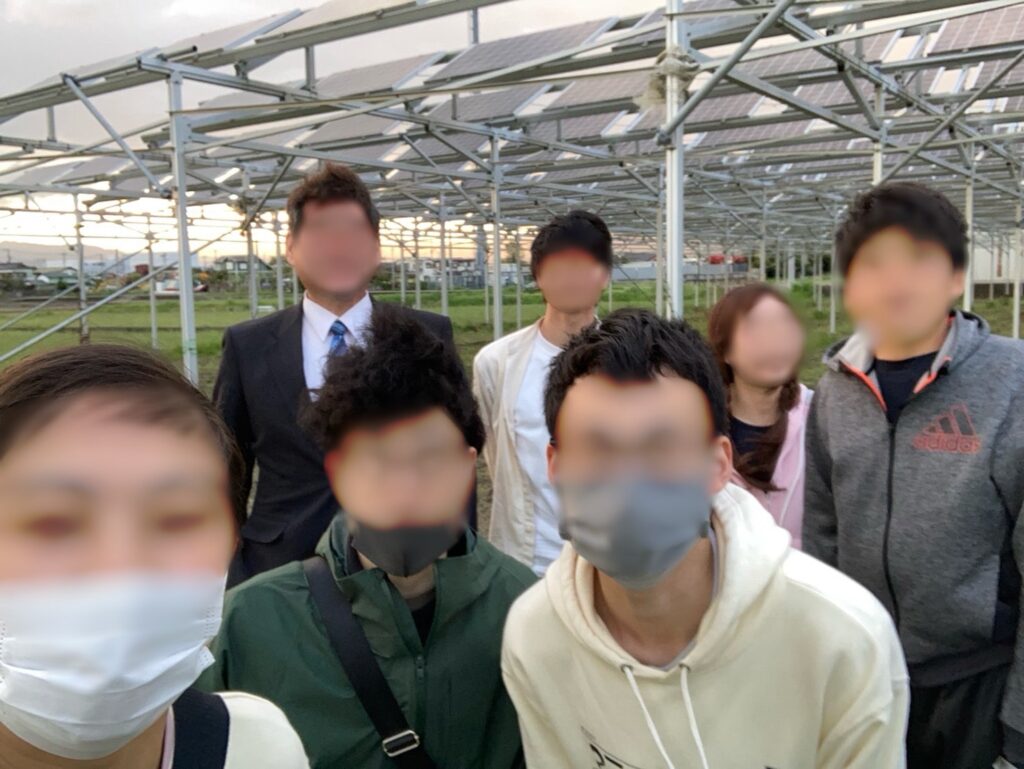
Mr. Oyamada in the top-left corner. We interviewed Mr. Oyamada and his team in Kanagote farm on April 8, 2023. Thank you for sharing your passion for better world and the amazing food served in SIESTA!
農家カフェ (=farmer’s cafe) SIESTA: 「食とエネルギーの自給・地産地消」を目指す農家カ
フェです!https://nouka-cafe-siesta.com/
Odawara Kanagote Farm: https://www.siesta-odawara.com/
Join our student media!!!
Thank you for reading our article! We are student media KAIRAN! We are on a project to create a media where students around the world share about their country’s culture, daily life, social issues and more! We want to contribute to world peace through promoting international mutual understanding! Please follow us on social media and join our project to share about your country on our media!
Follow Our Social Media





コメント